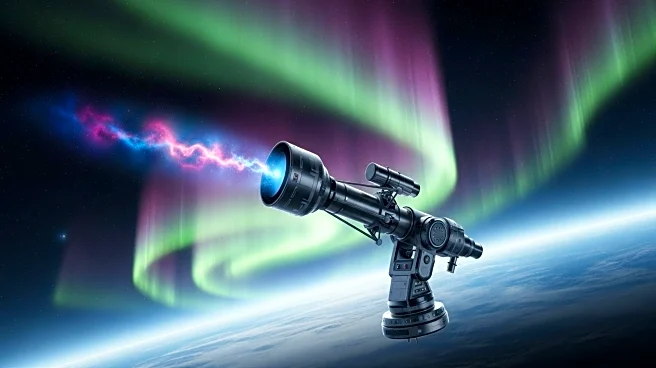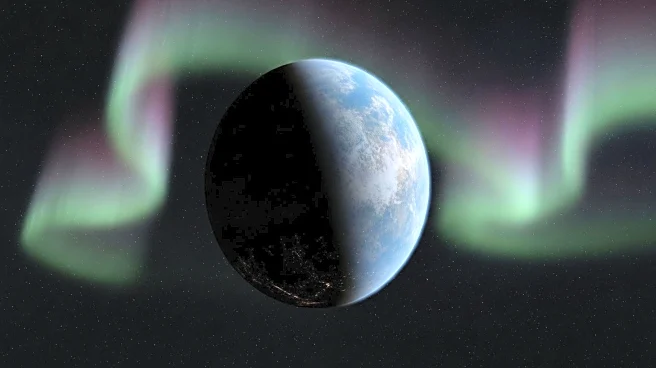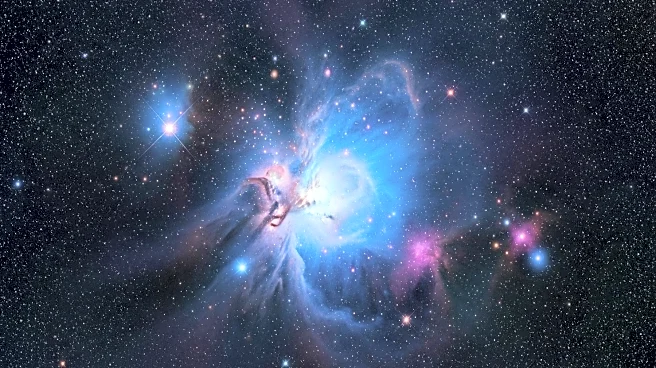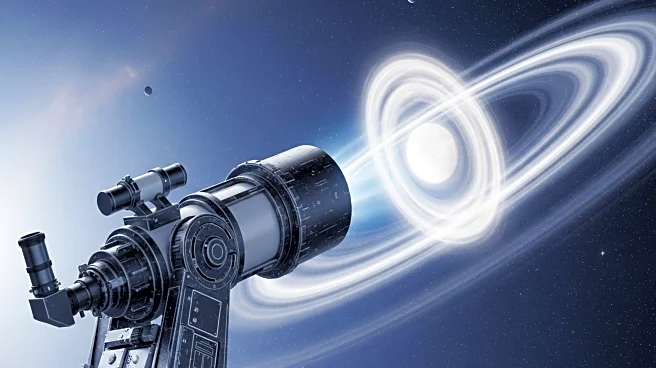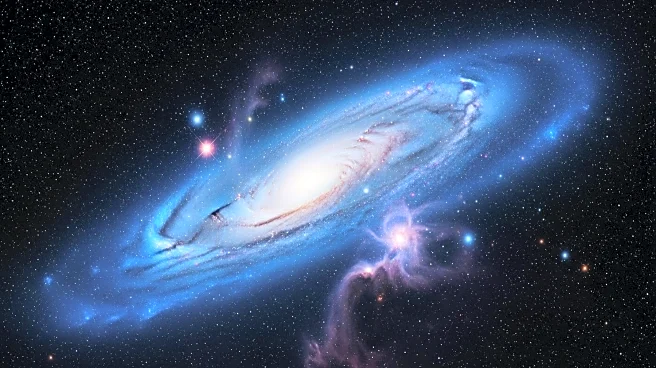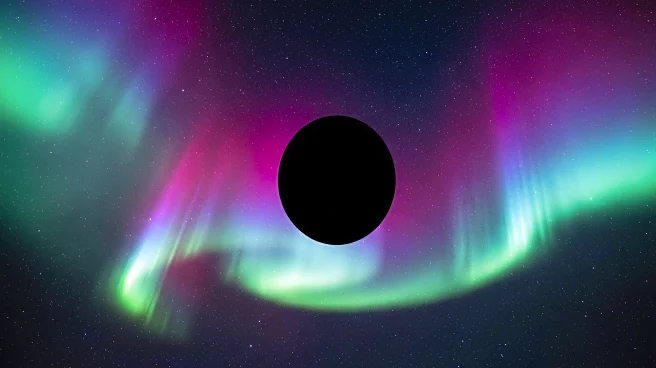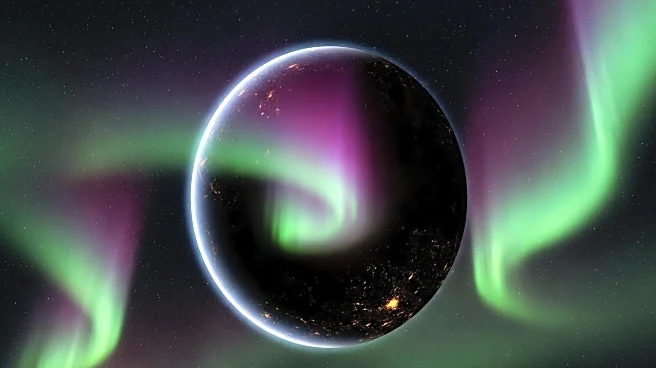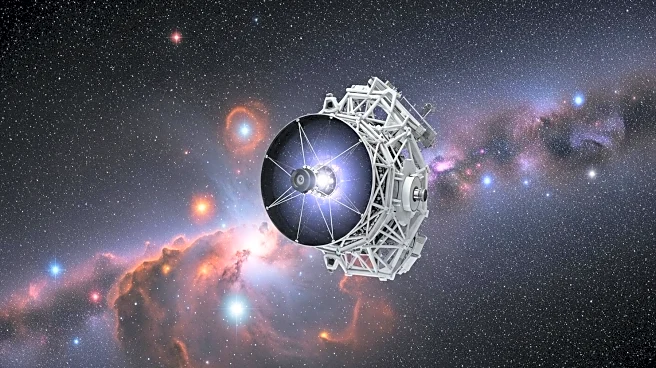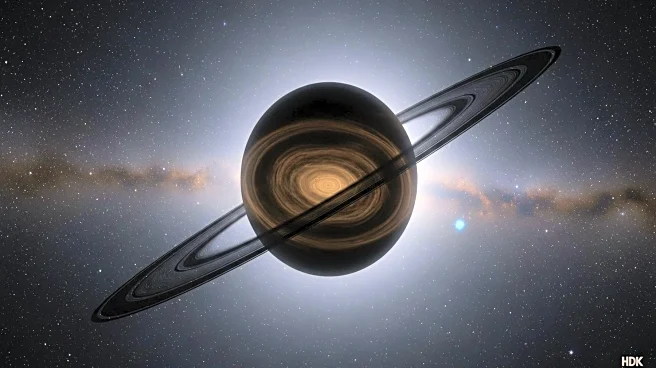What's Happening?
The James Webb Space Telescope (JWST) has made significant discoveries about a rogue planet named SIMP-0136, located approximately 20 light-years from Earth. This planet, which is about 12.7 times the mass and 1.2 times the radius of Jupiter, exhibits unique atmospheric characteristics. Researchers found that the planet's upper atmosphere is heated by auroras, leading to a thermal inversion where temperatures increase with altitude, contrary to typical planetary atmospheres like Earth's. The planet is also covered by constant global clouds composed of silicate grains, unlike Earth's water-based clouds. These findings represent some of the most precise atmospheric measurements of an extrasolar object to date, providing new insights into the atmospheric dynamics of rogue planets.
Why It's Important?
This discovery is crucial for understanding the atmospheric properties and formation of rogue planets, which do not orbit a star. The findings could reshape theories about planetary formation and evolution, offering a new perspective on how such planets develop and sustain their atmospheres. The study's precise measurements of atmospheric changes, linked to auroras and thermal inversion, could inform future research on similar celestial bodies. This research also highlights the capabilities of the JWST in advancing our knowledge of distant planets, potentially influencing future space exploration and study of planetary systems.
What's Next?
Future research will likely focus on further exploring the atmospheric phenomena observed on SIMP-0136 and other rogue planets. The upcoming launch of the Nancy Grace Roman Space Telescope in 2027 is expected to enhance the study of rogue planets by providing more detailed observations. This could lead to new discoveries about the prevalence and characteristics of rogue planets in the Milky Way, helping to refine estimates of their numbers and understand their potential impact on our solar system.
Beyond the Headlines
The study of rogue planets like SIMP-0136 could have broader implications for understanding planetary systems beyond our own. The unique atmospheric conditions observed may offer clues about the processes that govern planetary atmospheres in the absence of a host star. This research could also contribute to the search for life beyond Earth by identifying atmospheric conditions that might support life in unexpected environments.

